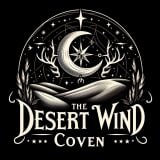Anyone practicing magic won't want to miss this comprehensive book of magician's correspondences. Featuring four times more tables than Aleister Crowley's Liber 777, this is the most complete collection of magician's tables available. This monumental work documents thousands of mystical links-spanning pagan pantheons, Kabbalah, astrology, tarot, I Ching, angels, demons, herbs, perfumes, and more!
The sources of this remarkable compilation range from classic grimoires such as the Sworn Book to modern theories of prime numbers and atomic weights. Data from Peter de Abano, Abbott Trithemium, Albertus Magnus, Cornelius Agrippa, and other prominent scholars is referenced here, in addition to hidden gems found in unpublished medieval grimoires and Kabbalistic works.

